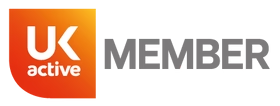A Personal Trainer will often take on clients who openly admit to being novices in the gym and beginners with regards to weight training. It’s a common question as to what the best weight training exercises for beginners are. To get the experts view, we put some questions to Study Active fitness expert Chris Walsh.
Why is weight training for beginners important?
Before we try and answer this question, we should establish what a beginner is. You can find multiple definitions of what a beginner is, and each will vary according to the author.
For the purposes of this note a beginner is someone who has completed less than 3 months consistent - minimum 3 x 45 minute sessions in one week of regular weight training.
Weight training is important as it can help to:
- Correct and maintain posture
- Build muscle to support joints and aid movement making the activities of daily living easier
- Increase athleticism, improving one’s ability at any chosen sport or activity
- Reducing the effects of sarcopenia (loss of skeletal muscle as we age)
- Create a flow of endorphins (feel good hormones) increasing our feelings of wellbeing
- Be part of a group, community or set of acquaintances where the opportunity may present itself to form new friendships
For personal trainers looking to build expertise in weight training for beginners, PT Cert offers specialized courses that help you provide safe and effective training plans.
So, How should a beginners strength training be designed then?
This is a common question and there are many misleading examples on the internet. I will provide the framework here and allow you to choose the exercises which fit onto this structure in order to provide a first-class training program.
As far as possible choose compound i.e., multi joint exercises. Our muscles function in synergy with our bodies, rarely in isolation.
The programme should include key movements listed 1-8 below.
Be creative with these using dumbbells, barbells, bands, cables.
Each session needs to include more than one exercise in each of the planes of movement, Frontal, Sagittal and Transverse.
So read through your list and select those which will be included in your programme that cover all these bases.
- Horizontal push e.g., Press ups, Bench press, Chest press
- Vertical pull e.g., Lat pulldown, Pull ups, One arm row
- Horizontal pull e.g., Seated row, Inverted row, T Bar row
- Vertical push e.g., Overhead press,
- Hinge e.g., Cable pull through, Kettle bell swing, Romanian Deadlift
- Squat e.g., Goblet, Sumo, Split squats
- Lunge e.g., static, Walking, TRX, Lateral, Transverse, Rear
- Core e.g., Reverse crunch, Side plank, Dead bug, Bird dog
Now that you’ve completed the hard work and have your fantastic list of exercises you may well find that the planned session will be too long in duration. If this is the case, you may need to split the program in half, divide it down the middle, for example -
A session on Monday might be Horizontal push, Vertical pull, Hinge, Lunge and Core.
B session on Thursday might be Vertical push, Horizontal pull, Squat, Lunge and Core.
Remember though each session will include the 3 key planes of motion.
The third session for your beginner would be a repetition of the A session. So, your 4-week plan may look like this:
Week 1 - ABA / Week 2 - BAB / Week 3 - ABA / Week 4 BAB and so on.
Add progressions as you go and change the exercises every 6 weeks or so.
NB: Always include a structured warm up and cool down and remember your clients’ goals.
Great information Chris, thanks. So, my next question is:
What are some tips for weight lifting for beginners?
Okay there are a few things to consider, let me list these below:
- Leave your ego in the locker!
- Always complete a structured warm up and cool down
- For the warmup after the CV aspect use dynamic, slow moving, multi joint movements e.g., plank walk outs to press, best exercise in the world, cat cow, walking knee hugs, rotational lunge etc.
- Create and maintain a full range of motion and keep the tempo slow, control the weight, take momentum out of the movement
- When thinking progression consider more than just adding weight/reps/sets. Also look at challenging balance, increasing lever length, slowing tempo, increasing range of motion etc.
- Put weights / plates away after use
- Wear minimalist footwear, an inch of foam under your sole can create ankle, pelvis, and spine instability
- Enjoy training and raising those endorphins
This has been very useful Chris. My final question is:
What 10 exercises would make a good beginner’s weightlifting routine?
If you’ve read the above, then you may be able to answer this one yourself! Let me list my top 10 below, here goes!
- Squat - Bodyweight, goblet, front squat
- Lunge - Multidirectional, add torso twist
- Cable pull through - Romanian deadlift, one leg deadlift
- Press ups - vary arm positions, slow tempo, raise a leg
- Pull ups - Use a platform or band for support
- Dips - Use a platform or band for support
- Seated or Standing row. Uni or bilateral
- Dumbbell overhead press
- Face pulls - use a longer rope hands above elbows thumbs back
- Plank pull through
For trainers wanting to ensure they're fully equipped to support beginners in weight training, CIMSPA provides certifications and professional development opportunities to help you enhance your skill set.
Summary - Weight Training for Beginners
Thank you, Chris, this is extremely useful. So, we now have some great ideas on how to plan resistance training exercises for beginners. With so many people beginning exercise programmes at present this knowledge will go a long way to help plan and deliver safe and effective resistance training for beginners.







